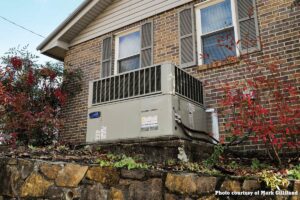
Dear Pat: We followed your advice last month and hired a contractor we think will give us an energy efficient renovation. How do we manage the job to make sure the project turns out right? – Bridget and Neil
Dear Bridget and Neil: Last month, I offered tips on how to hire a good contractor, but it’s smart to realize that after the hiring is complete, contractors need to be managed.
First, you should decide who will be the main contact with your contractor. Clear communication is critical because a renovation that includes energy efficiency improvements comes with extra challenges. A single point of contact will help avoid confusion, conflicts and cost overruns.
Before the work starts, have a discussion with your contractor about quality. You want the contractor to know you’ll be carefully overseeing the work and that there may be others involved in this oversight, such as building inspectors, your electric cooperative or an independent energy auditor. You can discuss the standards of a professional, high-quality job. And you can agree on the points at which the contractor will pause so you or someone you designate can review the work. At a minimum, an inspection should take place before you make an interim payment.
Here are a few examples of interim review points:
* The building envelope should be properly sealed before insulation is installed because air leaks increase energy use and reduce comfort.
* Replacement windows should be properly flashed and sealed before siding and trim are installed, which prevents moisture problems and air leaks.
* Some insulation measures can be inspected before they are sealed up behind walls or ceilings.
Almost all efficiency measures require some kind of final inspection. For example, infrared thermometers can show voids in blown insulation, and fiberglass batts can be visually inspected to ensure there are no air gaps and the batts are not compressed.
HVAC measures require special attention. Nearly half of all HVAC systems are not installed correctly, which often causes uneven temperature distribution throughout the home, along with higher energy bills. ENERGYSTAR® has a special program to ensure quality HVAC installation. Forced air systems typically have poorly balanced supply and return air delivery that can often be improved. Air flow can be measured at each register, and a duct blaster test can identify and quantify duct leakage.
When you review the work, it may be helpful to take photos or to bring in an energy auditor. Be sure to have these inspections outlined in the contract and discussed beforehand so the contractor is comfortable.
It will be tempting to add “just one more thing” along the way, and the contractor may agree a change is simple and possible within the time frames. Contractors and customers often miscommunicate about change orders and end up disagreeing about additional costs when the project is completed. Before you make any changes, be sure to get a written cost quote. If it’s significant, you can then weigh the cost against the benefit of the change.
It’s a good idea to maintain good records as the project progresses. These records could be helpful for building inspectors or to qualify for rebates or tax credits.
When the renovation is complete, it may be tempting to sign the check, shake hands and breathe a sigh of relief that it’s all over. Depending on the size and complexity of the project, it may be worth the extra step of having a final audit by a licensed energy auditor.
My neighbors were saved from a home renovation disaster when an energy audit discovered the energy efficiency contractor had failed to produce the promised efficiencies. The contractor had to perform thousands of dollars’ worth of improvements to fulfill the contract before my neighbors made the final payment.
Once you confirm that the work is 100 percent complete, you can write a check for the final payment, then sit back and enjoy your revitalized, more energy-efficient home!
This column was co-written by Pat Keegan and Brad Thiessen of Collaborative Efficiency. For more information on managing a home renovation contractor, please visit: www.collaborativeefficiency.com/energytips.









